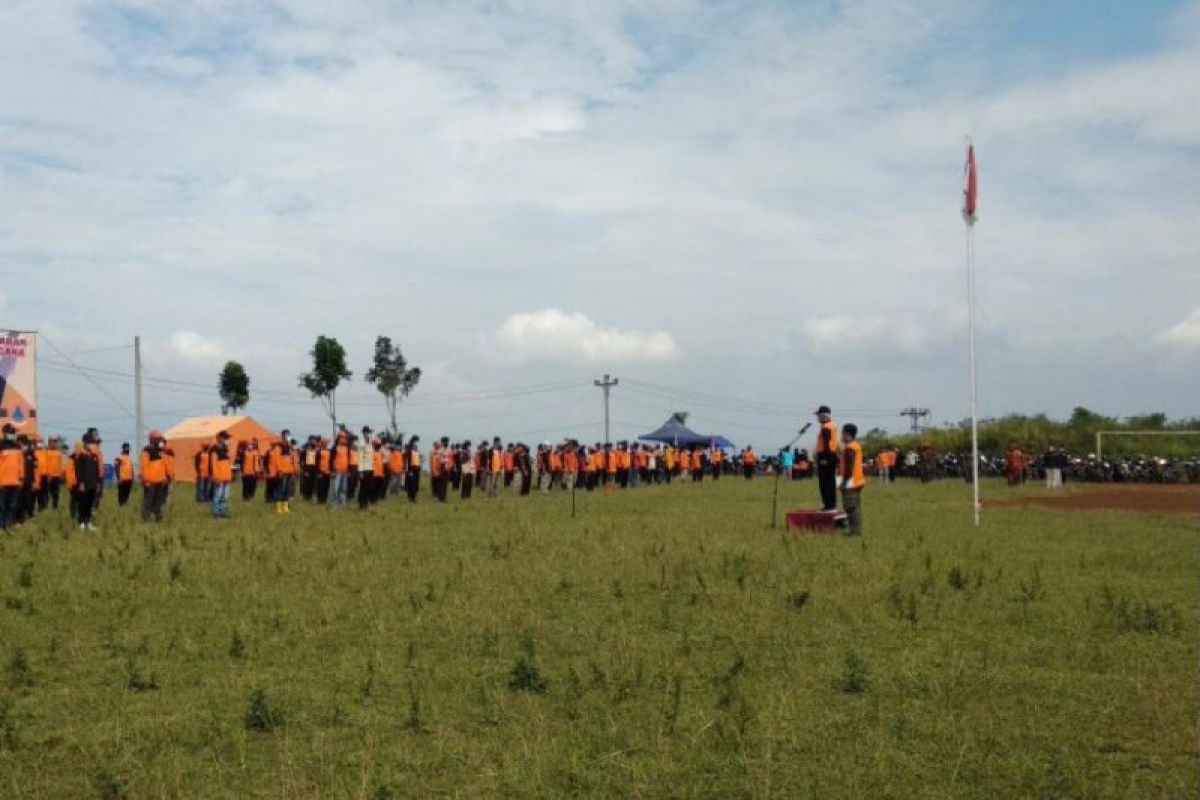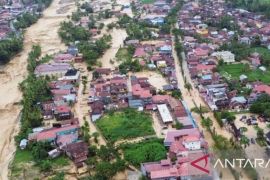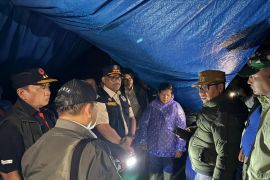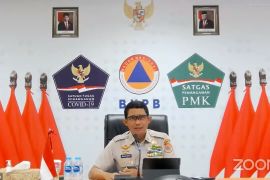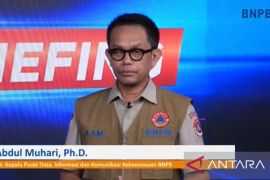I have pressed for training, simulation, and their equipment. Now, I urge the regional governments to tend to the officials and equipment to maintain themPurwokerto, C Java (ANTARA) - Disaster risk reduction and post-disaster recovery were chiefly discussed during the 2022 National Coordination Meeting of Disaster Mitigation.
The meeting demonstrated the Indonesian government's commitment to make disaster mitigation as one of its priority programs. It is in accordance with the National Medium Term Development Plan 2020-2024 on the environment, disaster resilience improvement, and climate change issues.
The strategy of strengthening disaster mitigation and preparedness is required to realize a disaster-resilient Indonesia and thereby supporting sustainable development.
Indonesia is a country that has often experienced natural disasters. For example, it was reported that Indonesia bore witness to at least 150 volcano eruptions over the last two decades, according to the Geological Agency of the Ministry of Energy and Mineral Resources on February 4, 2022.
Head of the Center for Research and Development of Geological Disaster Technology (BPPTKG) Hanik Humaida stated that the level of volcanic activities in Indonesia was quite high with diverse types of eruptions.
"For the 2000-2021 period, more than 150 eruptions of 38 volcanoes with various types of eruptions occurred, specifically effusive, explosive, and phreatic, causing various dangerous phenomena," Humaida noted.
Hence, the government has designated a framework for the concept of disaster risk reduction, including considering all possible ways to minimize the impacts caused by disaster incidents.
Related news: Floods submerge 2,433 houses in Cirebon
Coordinator of Geological Disasters at the Jenderal Soedirman University's Mitigation Center, Dr. Indra Permanajati, explained that the first aspect to note in strengthening regional capacity in disaster risk reduction is developing the formulations of mitigation and preparedness.
According to him, the capacity of each region becomes a crucial parameter that is one determinative factor in the success of disaster risk reduction programs.
Currently, the government has readied several policy instruments for disaster risk management, one of which is the Disaster Mitigation Master Plan stipulated in Presidential Regulation No. 87 of 2020 on the road map of long-term disaster handling until 2044.
Nevertheless, the prepared diverse policy tools need to be supported through collaboration among several parties for them to operate and meet the expected target.
According to Permanajati, concurrently a member of the Indonesian Disaster Experts Association, strengthening regional capacity can be supported by data, information, and risk maps in each region in the country. In addition, he suggested programs for improving the people's literacy in disaster that can increase their understanding of risks at least at the regional level.
Other endeavors to empower regional capacity in dealing with disasters are to promote awareness on climate change adaptation as well as enhance social resilience and public health to increase the standards of disaster handling service.
Related news: Flood displaces hundreds of Alue le Mirah residents in East Aceh
It is no less important to realize a society that is resilient against disaster events. Thus, it is imminent to encourage disaster education to increase public understanding and awareness of the importance of disaster risk reduction efforts.
Another approach to raise public awareness on disaster handling is through the disaster resilient village program, so that each village has the ability to independently adapt and deal with the threats of disaster and recover immediately from the damaging impacts.
Strengthening the community's capacity in dealing with disasters is the key to defending society from the threats of disasters. Hence, active involvement among the government, business players, academicians, and the community is deemed necessary.
Disaster prevention
The commitment to strengthening regional capacity by holding relevant programs aligns with one of President Joko Widodo's directives conveyed at the opening ceremony of the 2022 National Coordination Meeting on Disaster Mitigation, Wednesday, Feb 23. His directive stated that disaster handling programs should be oriented to prevention efforts.
Meanwhile, Permanajati highlighted that the programs aim to prevent disasters from occurring and preparing the community when a disaster strikes.
The principle of preventing disasters from occurring might apply to the types, such as landslides, floods, and land subsidence.
However, for disasters that are purely caused by natural factors, such as earthquakes, tsunamis, and volcanic eruptions, the community can be readied to deal with them, such as by training them to implement personal safety measures and being aware of the evacuation steps when such disasters strike.
During implementation, those disaster impact reduction endeavors had been exemplified by the Banjarnegara District Regional Disaster Mitigation Agency (BPBD) in Central Java.
Related news: W Pasaman earthquake: Red Cross builds temporary houses for evacuees
The program comprised extensively disseminating information to the community to increase public understanding and awareness of the importance of nurturing the balance of nature, knowing the early signs of disasters, and conducting evacuation measures during a disaster event.
Banjarnegara BPBD's Head of Emergencies and Logistics, Andri Sulistyo, elaborated that the programs to maximize community-based disaster mitigation also encourage the culture of disaster awareness in local areas in addition to optimizing the use of early warning tools.
Community involvement to encourage resilience against disasters is also strengthened through the disaster-resilient village program. The Banjarnegara administration has targeted to form as many as 159 disaster-resilient villages to improve the locals' independence and readiness.
The program is in accordance with the pentahelix model proclaimed by the Indonesian government in the disaster handling scheme, which is to build synergy with all relevant parties from the smallest level, such as from the family level.
Another similar program related to responding to disasters is the Disaster Ready Village Program designed by the Social Affairs Ministry.
On much the similar lines as the disaster-resilient village program, the Disaster Ready Village aims to build strong communities against disasters at the level of regions.
While attending the Disaster Ready Village simulation event in Karangjompo Village, Tirto, Pekalongan, Central Java, on Thursday, March 3, House member M.F. Nurhuda Yusro expects the program to not solely be implemented in Tirto.
Related news: Death toll rises to 7 in West Sumatra quake, landslide
For instance, he pointed out that the program can be implemented in Siwalan, Wonokerto, West Pekalongan, North Pekalongan, and East Pekalongan.
"I have pressed for training, simulation, and their equipment. Now, I urge the regional governments to tend to the officials and equipment to maintain them," he remarked.
Meanwhile, the Pekalongan City Regional Disaster Mitigation Agency (BPBD), Central Java, has established disaster-responsive villages that would involve the community in tackling disasters, such as floods and tidal waves.
Pekalongan BPBD Head Saminta stated that the agency will also conduct non-physical activities through the program to prepare the public for floods and tidal waves in addition to physical activities or infrastructure development.
Related news: Papua: MP seeks sanctions against separatists for shooting PTT workers
Related news: APEC economic leaders meeting set for Nov 18--19
Editor: Fardah Assegaf
Copyright © ANTARA 2022
